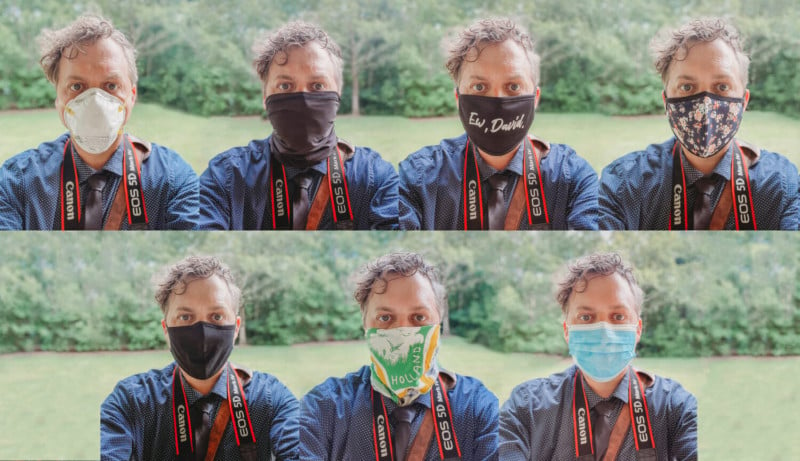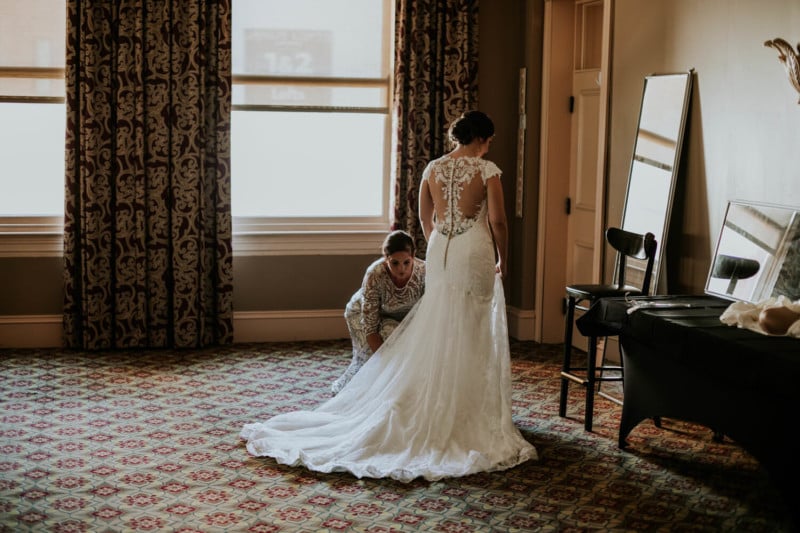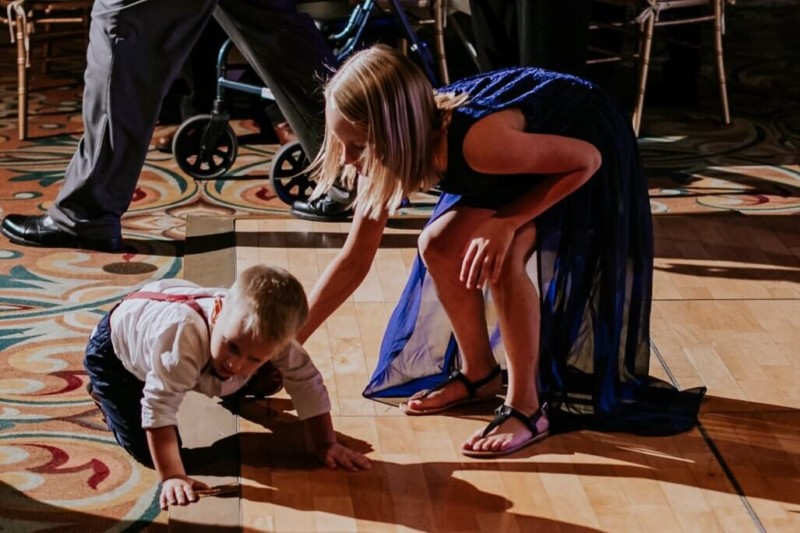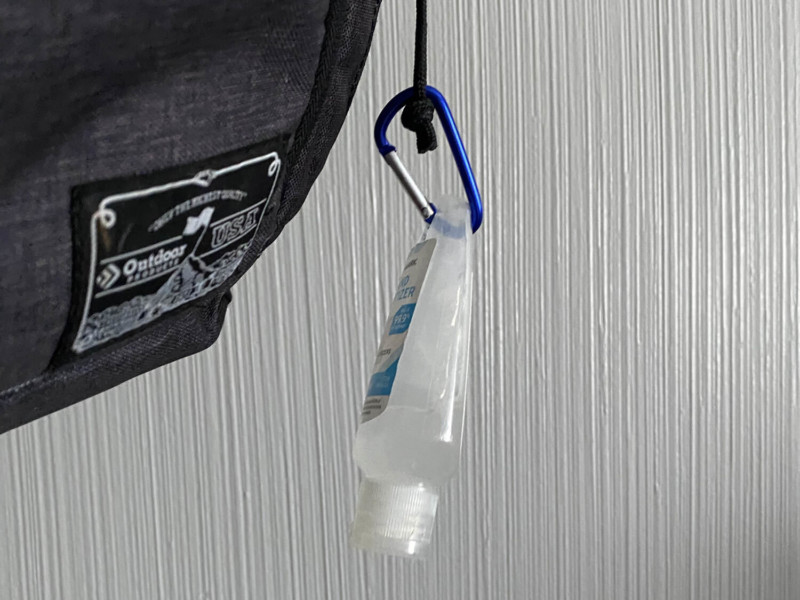Practical Steps for Wedding Shooters to Stay Safer During COVID-19
![]()
It’s difficult to stay safe right now as a normal human, just trying to get groceries and make a living. It’s more difficult if you’re an event or wedding photographer. As an event photographer or wedding photographer, you might be exposed to crowds of people from all over the country, and in some cases from all over the world.
It’s Okay to Say No
This is great advice for any time. Your safety is important. If your client asks you to do something that is unsafe or just feels unsafe, remember to say no.
Talk To Your Clients in Advance
Let people know that while you can still capture their wedding, you are concerned about COVID-19. Tell them in advance you’ll be keeping your distance and wearing a mask. A little talk pre-wedding day with the client about best practices for keeping everyone safe might go a long way on the day.
Suggest they have hand sanitizer on tables at the reception and smaller bottles in the bathrooms. Suggest they have disposable masks for guests to wear in case those guests forgot their masks. Like I said, a little pre-talk where you establish boundaries and make suggestions can do a lot to make your day safer.
Stay Distant
Whenever possible, make sure there are at least 6 feet between you and everyone else. This isn’t always easy, but it’s the best advice. Also, stay distant from other wedding vendors and your second shooter as much as possible too.
Wear a Mask
If you have an N95 mask (or even a KN95 mask), this is when you should wear it. That’s the way to help keep yourself safest. If you don’t have a mask like that, wear a cloth mask or 3-ply disposable mask. These don’t keep you nearly as safe, but if you wear a mask it’s more likely other people will wear a mask around you or stay distant from you.
People respecting your boundaries will keep you safer, and a mask is a good way to let them know you’re taking this seriously even if they are not.
Bring a Second Mask or Even a Third Mask
From experience, masks got sweaty and wet. That makes them really uncomfortable. You don’t want to get fed up and take your mask off when it becomes uncomfortable. So bring a second one and step outside to change it out with a fresh one. If you need help with what to look for in a good mask, check out this article about the best masks for photographers.

Bring Disposable Masks
You don’t have to tell anyone they have to wear a mask, but bring a box of extra disposable masks. A 50 pack should do good. Set them out during getting ready photos and just say that they’re there for anyone who wants one. You might run this idea past the couple before the day, but even if you don’t, as long as you don’t try to force anyone to wear a mask you should be okay.
Encourage People to Wear Masks
You’re already leading by example and that’s great. Now let people know it’s natural to have a mask on in photos, and that you are okay with it. A lot of people are worried about masks looking weird in photos.
Compliment guests on their masks and tell them you’re excited to be able to document how much they care about the people around them. Also, letting them know they look great will do a lot to getting them to keep their masks on their faces. You can also tell them the photos with the masks look better and more accurately capture this time in the world if they seem to care about history.
Use Longer Lenses
If you normally shoot with a 35mm, consider switching it up for a 50mm. If you normally shoot with a 50mm, consider using an 85mm. This will help you stay distant because you’ll be forced to take a few steps back in order to compose similar shots to what you usually shoot. Plus, you might like the compression of a longer lens. This could change the way you shoot entirely in the long run, but in the short run, it’s about distance and safety.
I typically shoot with a 50mm for portraits. For recent engagement shoots, I’ve been using an 85mm and it’s been great.
Avoid Cramped Spaces
A big stress point for wedding photographers is the getting ready shots. Brides and grooms often get ready in tiny, cramped rooms with bad light. Most of us already move our clients to spaces with better light for their getting ready shots.
Now, try picking a bigger space where you can stand further away. Or, even move your clients outside once they’re decent. Some fake getting ready shots in a forest might not satisfy the photojournalist in your heart, but it’ll allow you to stay a little bit safer.

Suggest Your Brides and Grooms Get Ready Alone
Suggest your clients get ready alone or with a limited number of people (just mom/dad for instance). I love photos where the wedding party and family members are helping the bride or groom get ready, but maybe now is the time to find beauty in the solitary moments.
Avoid the Open Dancing
Avoid getting in the middle of the dance floor if they have one. I usually shoot with a 35mm once the open dancing starts, and I get up in the mix with the guests. I like the look of this on the dance floor and think it makes for great shots. But now, I’m going to step back with a longer lens and shoot from the outskirts.
I’ve tried this before and I know it’s frustrating. People will get in between me and my subjects as they dance, but I know from experience that I can still get great shots.

Wash Your Hands Regularly
I usually tell photographers to drink regularly to stay hydrated. Now, I’m adding in to wash your hands regularly. If you’re walking past a bathroom with a sink and soap, take 20 seconds to wash your hands real quick. No client worth your time will be upset with you for doing this.
Bring Hand Sanitizer
Grab a bottle of hand sanitizer and throw it in your camera bag. If you can, get one you can just clip onto your zipper or the strap of your bag. That way it’s always out and available. And a note from me if you’re washing your hands and using hand sanitizer frequently, bring some hand lotion. Your hands will get dried out and you don’t want them to get so bad that the skin becomes irritated or cracks.

Bring Disinfectant Wipes
You’ll want to wipe down your light stands at the end of the night. People always grab them for some reason during the reception. So a quick wipe down will do wonders.
Don’t Touch Knobs, Handles, or Switches
Door knobs, door handles, and light switches are all things that are touched frequently. Avoid them. If you touch them then wash your hands or sanitize immediately afterward. If you’re in a bathroom, grab a paper towel or bit of tissue and use that to open the door. Bring tissues with you in your camera bag and use those to open doors. If you really need something, grab a lens cloth and use that. You can wash and sanitize your lens cloths when you get home (or just throw it out because they’re relatively cheap).
No Hand Shaking or Hugs
I’ve had a few clients try to bump fists or bump elbows. This is awkward and weird. It also encourages contact and being closer than 6 feet apart. Don’t do it. If you somehow find yourself in a situation where you’ve had your hand shook unexpectedly, then use that hand sanitizer right away. And in my opinion, go ahead and use it immediately after the contact, while you’re still possibly talking to the person and making direct eye contact. Okay, that might be a little much, but it’s important not to touch people.
Guide Your Clients to Smaller Weddings
In your pre-wedding talk, mention to your clients that they might want to cut their guest list to ensure people can social distance. Your clients know you’re a professional and thus they are looking to you to lead. There’s nothing wrong with suggesting something, just don’t push for it if your client seems uncomfortable with the suggestion.
Also, bring up that maybe they should consider the possibility that people in COVID hotspots won’t be able to attend so they start thinking about the risks they’re taking. This will get them thinking about the possibility of a smaller guest list if nothing else does. Suggest maybe an elopement with a reception at a later date. I know we all need money, right now especially, but no amount of possible money is worth your life.
Take Breaks
Weddings are always dangerous when there’s any kind of flu around. Right now they’re much more dangerous. Odds are this is taking a mental and emotional toll on you throughout the wedding day. Take breaks to get outside and away from people so you can take some deep breaths. Your physical health isn’t the only thing at risk right now.
Group Photos Are Always Voluntary
This isn’t so much a tip for your safety, but for everyone else’s safety. Remember that participation in group photos is always voluntary. If people want to stay out of those photos, that’s their choice. If they want to wear masks or take them off, that’s their choice. You can’t be responsible for their decisions.
If worse comes to worst and you really need a group photo with people unmasked but who don’t want to be close, throw your camera on a tripod and get ready to Photoshop them together in your post-production. It’s a weird time.
Stay Safe
Stay safe and avoid doing anything that makes you worried about your health. And remember, if you fear for your safety you can, and should, say no.
Author’s note: This question was originally answered in Episode #158 of the podcast Wedding Photo Hangover. The photos in this blog post are mostly from a wedding Van Elk and Co. shot before the pandemic. The photos are pre-pandemic, but follow the advice we give in the post. We also want to thank Del Toro Photo and Morgan Roberts Photo for helping us with writing this blog post.
About the author: Steven Van Elk is an Indianapolis-based photographer who specializes in weddings and commercial work with his wife, Jennifer. To see more of their work, check out their website or give them a follow on Instagram and Facebook. This post was also published here.